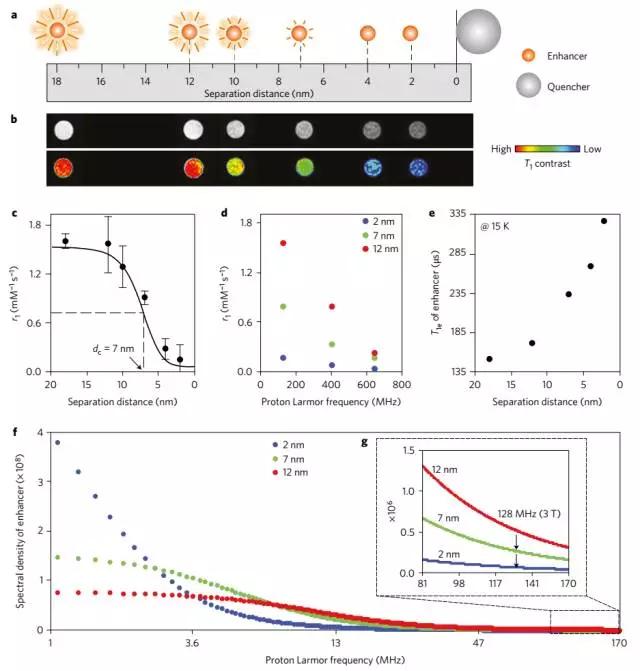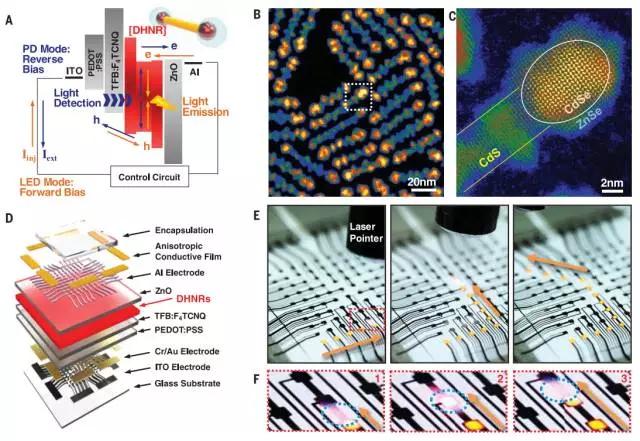Abstract 1. Aspartant compound of helium and sodium under high pressure (Astable compound of helium and sodiumathighpressure) is generally considered to be chemically inert because it is extremely stable...
1. Stable compounds of barium and sodium under high pressure
(A stable compound of helium and sodium at high pressure)
It is generally considered to be chemically inert because of its extremely stable closed-shell electronic configuration, zero electron affinity and excellent ionization potential. In addition to a few inclusion complexes, the ability to form thermodynamically stable compounds is not known. Dong et al. used the ab initio evolutionary algorithm USPEX and diamond anvil high pressure synthesis to find a thermodynamically stable bismuth and sodium compound, Na2He, which has a fluorite structure and is stable at >113 GPa. They also show that the presence of He atoms leads to strong electron localization and insulates this material. The phase is an electronic phase that positions the electron pair in the gap and forms an eight-core double electron bond in the empty Na8 cube. They also predicted the presence of compounds with a similar Na2HeO structure at pressures above 15 GPa. (Nature ChemistryDOI: 10.1038/NCHEM.2716)
2. Chemically diverse and multifunctional organic-inorganic hybrid perovskite
(Chemically diverse and multifunctional hybrid organic–inorganic perovskites)
The organic-inorganic hybrid perovskite (HOIP) can have a broad composition including halides, azides, formates, dicyanamides, cyanides and dicyano metal salts. These materials have several features in common, including their typical ABX3 perovskite structure and the presence of organic amine cations occupying the A site. Current research on HOIP tends to focus on metal halide HOIP, which is promising for use in solar cells and optoelectronic devices; however, other subclasses also exhibit diverse physical properties. Li et al. summarized the chemical variability and structural diversity of all known HOIP subclasses, as well as their compelling physical properties, including photovoltaic and optoelectronic properties, dielectric properties, magnetic properties, ferroelectricity, and iron elasticity. And a comprehensive report of multi-iron. (Nature Reviews Materials DOI: 10.1038/natrevmats.2016.99)
3. Direct observation of ion dynamics in supercapacitor electrodes
(Direct observation of ion dynamics in supercapacitor electrodes using in situ diffusion NMR spectroscopy)

Ion transport in porous carbon electrodes is the basis for energy storage in supercapacitors and also determines the rate at which they charge and discharge, but few studies have clarified the material properties that affect ion dynamics. Forse et al. used in-situ pulsed-field gradient NMR spectroscopy to directly measure ion diffusion in supercapacitors. They found that the limitations in the nanoporous electrode structure reduced the effective self-diffusion coefficient of ions by more than two orders of magnitude compared to pure electrolytes, and the intra-well diffusion was modulated by changes in the total number of ions at the electrode/electrolyte interface. The electrolyte concentration and carbon pore size distribution also affect the diffusion within the pores and the movement of ions in the nanopore. According to their findings, Forse et al. believe that controlling the charging mechanism can adjust the energy and power performance of supercapacitors for a range of different applications. (Nature Energy DOI: 10.1038/nenergy.2016.216)
Distance-related magnetic resonance imaging
(Distance-dependent magnetic resonance tuning as a versatile MRI sensing platform for biological targets)

Nanoscale distance-dependent phenomena, such as Forster resonance energy transfer, are important interactions for sensing and imaging, but their versatility for bioimaging is undesired with surrounding biological matrices, especially in vivo systems. The limitation of photon interaction. Choi et al. reported a novel magnetic-based nanoscale distance-dependent phenomenon that can quantitatively and reversibly sense and image intramolecular/intermolecular interactions of important biological targets. They also introduced a distance-dependent magnetic resonance tuning (MRET) that occurs between a paramagnetic "enhancer" and a superparamagnetic "quencher", where the T1 magnetic resonance imaging (MRI) signal is turned ON or OFF. It depends on the separation distance between the quencher and the enhancer. Using MRET, Choi et al. demonstrated the principles of MRI-based scales for nanoscale distance measurements and successfully detected molecular interactions (eg, cleavage, bonding, folding, and unfolding) and biological targets of in vitro and in vivo systems. MRET can be used as a new sensing principle to expand the exploration of a wider range of biological systems. (Nature Materials DOI: 10.1038/NMAT4846)
5. Double heterojunction nanorod light response LED
(Double-heterojunctionnanorod light-responsive LEDs for display applications)
Dual-function displays can simultaneously transmit and receive information and energy through visible light, which enhances user interface and device-to-device interactivity. Oh et al. designed the double heterojunction as a colloidal semiconductor nanorod that simultaneously achieves electroluminescence in a single device and efficiently produces photocurrent through photovoltaic response. These dual-function, full-solution, double-heterojunction nanorod light-responsive LEDs open up viable routes for a variety of advanced applications, from contactless interactive screens to energy harvesting and clearing displays, as well as massively parallel Data communication between the display and the display. (Science DOI: 10.1126/science.aal2038)
6. Heat transfer through atomic contacts
(Heat transportthrough atomic contacts)

Nanoscale heat transfer and dissipation severely limit the miniaturization of high performance electronics and circuits. Metal atom junctions can be used as model systems to detect atomic and horizontal electrical and thermal effects in a one-dimensional (1D) system. Although charge transport in atomic junctions has been extensively studied over the past two decades, the characterization of heat transfer is still insufficient because it requires high sensitivity combined with small heat flux and stable formation of atomic contacts. Mosso et al. used atomic junctions to measure the heat transfer of gold single-atom contacts at room temperature and the analysis of thermal conductivity. Simultaneous measurement of charge and heat transfer reveals the proportionality between electrical and thermal conduction and is quantized by the corresponding electrical/thermal conductivity quantum. This constitutes an verification of the Wiedemann-Franz law at the atomic scale. (Nature Nanotechnology DOI: 10.1038/NNANO.2016.302)
7. Photovoltaic field effect transistor
(Photovoltagefield-effect transistors)

The detection of infrared radiation makes night vision, health monitoring, optical communication and three-dimensional object recognition possible. Silicon is widely used in modern electronics, but its electronic bandgap hinders the detection of light longer than about 1100 nanometers. Therefore, there is a great interest in extending the performance of silicon photodetectors beyond the infrared spectrum of the band gap of silicon. Adinolfi et al. demonstrated photovoltaic field effect transistors using silicon as a charge transport, but due to the use of quantum dots, light absorbers are also sensitive to infrared light. Photovoltaic devices produced at the interface between silicon and quantum dots, combined with high transconductance provided by silicon devices, provide high gain (more than 104 electrons per photon at 1500 nm), fast time response (less than 10) Microseconds) and widely adjustable spectral response. The responsiveness of Adinolfi et al.'s photovoltaic field effect transistors is five orders of magnitude higher at 1500 nm than previous infrared sensitized silicon detectors. Sensitization is achieved using a room temperature solution process and does not rely on conventional high temperature epitaxial growth of semiconductors (eg, for germanium and III-V semiconductors). The results show that colloidal quantum dots can be used as an efficient platform for silicon-based infrared detection, and can compete with the most advanced epitaxial semiconductors. (NatureDOI: 10.1038/nature21050)
8. Redox reagent for chemically selective methionine bioconjugation
(Redox-based reagents for chemoselective methionine bioconjugation)
Cysteine ​​can be specifically functionalized by numerous acid-base binding methods and is used to detect protein function to antibody-drug conjugates and proteomes. In contrast, selective linkage to other sulfur-containing amino acids (methionine) has been ruled out by its inherent, weaker nucleophilicity. Lin et al. reported a strategy for bioselective methionine bioconjugation via redox reactions using highly oxyziridine-based reagents for high selectivity under a range of biocompatible reaction conditions Rapid and powerful methionine labeling. They also highlighted the broad utility of this conjugate approach, allowing precise loading of payloads onto proteins, synthesis of antibody-drug conjugates, and identification of highly reactive methionine residues throughout the proteome. (Science DOI: 10.1126/science.aal3316)
9. Solving quantum multibody problems with artificial neural networks
(Solving thequantum many-body problem with artificial neural networks)
The challenge posed by multi-body problems in quantum physics stems from the difficulty of describing the important correlations of codes in multi-body wave function exponential complexity. Carleo et al. demonstrated that systematic machine learning of wave functions can reduce this complexity to an easy-to-handle computational form for some physics concerns. They also introduced a variational representation of the quantum state of an artificial neural network based on a variable number of hidden neurons. This enhanced learning scheme can discover ground states and describe a single temporal evolution of complex interacting quantum systems. Moreover, this method achieves high precision in one-dimensional and two-dimensional depiction of prototype interactive spin models. (Science DOI: 10.1126/science.aag2302)
3D fish type mask machine
Cup 3D Mask Machine,Fold Flat 3D Mask Machine Online,Kn95 Certified 3D Mask Machine Online,N95 Certified 3D Mask Machine
Dongguan Huitong Automatic Machinery Technology Co., Ltd , https://www.aitopsolution.com








